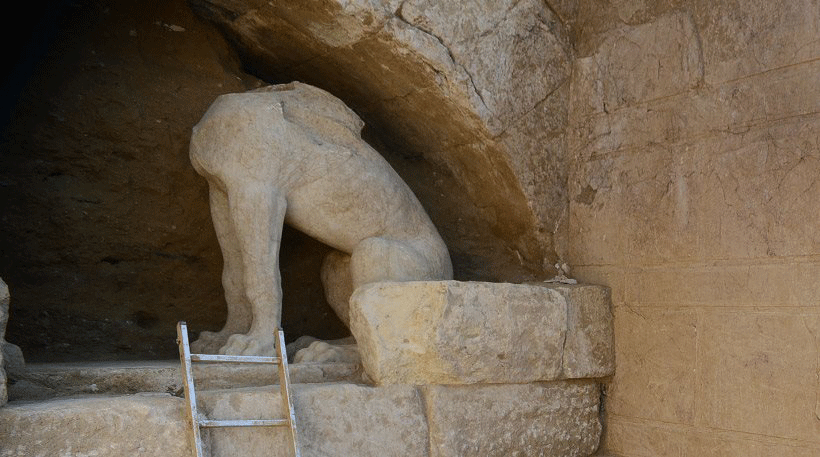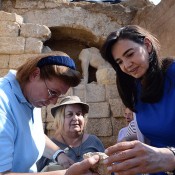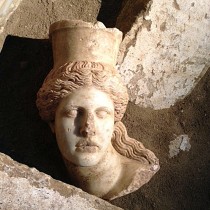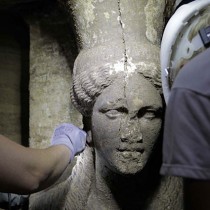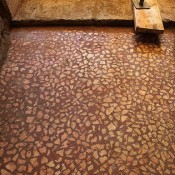Amphipolis tomb soon to reveal its secrets as archaeologists are resuming work. Over the past week, the archaeological community worldwide has been shaken by updates on research through a uniquely massive and elaborately built early Hellenistic funerary monument revealed atop Kasta Mound, at Amphipolis, which appears to be the largest ancient tomb to have been discovered in Greece. And now that works in the site continue, all eyes are again on Amphipolis expecting, at least, another bunch of unprecedented finds.
Archaeologists led by Katerina Peristeri are excavating the site since 2012, while the first announcements regarding its importance were made a year ago. Now we know that the monument is characterized by a 497-metre outer wall made of Thasian marble and monumental entrance accessed by a 4.5-metre-wide road and 13 steps, while it is topped by two sphinxes. A famous sculpture showing a lion, which has been a trademark of Amphipolis has now been found to belong to the monument, as it was topping it. It has also been announced that the monumental road leading to the entrance was covered by frescoes and that another wall of monumental size was protecting it. The monument is dated to the 4th c. BC.
Who had been interred in the tomb? “It looks like the tomb of a prominent Macedonian of that era,” had stated a culture ministry official who spoke to ‘The Guardian’ newspaper. On their side, politicians and the local press have sensationalized the discovery by linking it somehow with Alexander the Great, despite the fact that Alexander never returned to Greece -having died in Babylon and transferred to Egypt where his body was accessible to view. Other media, like the ‘Proto Thema’ newspaper, see a possibility that one of Alexander’s generals had been interred in the tomb, aspiring for”great treasures brought back from the East” to be found inside. The site has been already visited by Greek politicians, including PM Antonis Samaras.
But what really lies beneath Kasta Mound? As stated at Greek newspaper ‘Proto Thema’, “the best case scenario would be for the roof not to cave in and for all treasures to be intact and not have been looted so that researchers can identify the person buried here based on bones, gender and other indications. The burial chest and objects connected to the buried person’s life – such as jewelry, pottery, weapons etc. – would also be in the tomb, provided it hasn’t been robbed”. First, however, archaeologists have to demolish the protective stone wall and remove the debris expected to be found outside and, in the event the roof has collapsed, inside the tomb. Finally, according to Architect Michalis Lefantzis, any official announcement regarding developments at the site will be made by the Greek Ministry of Culture and Sport.
